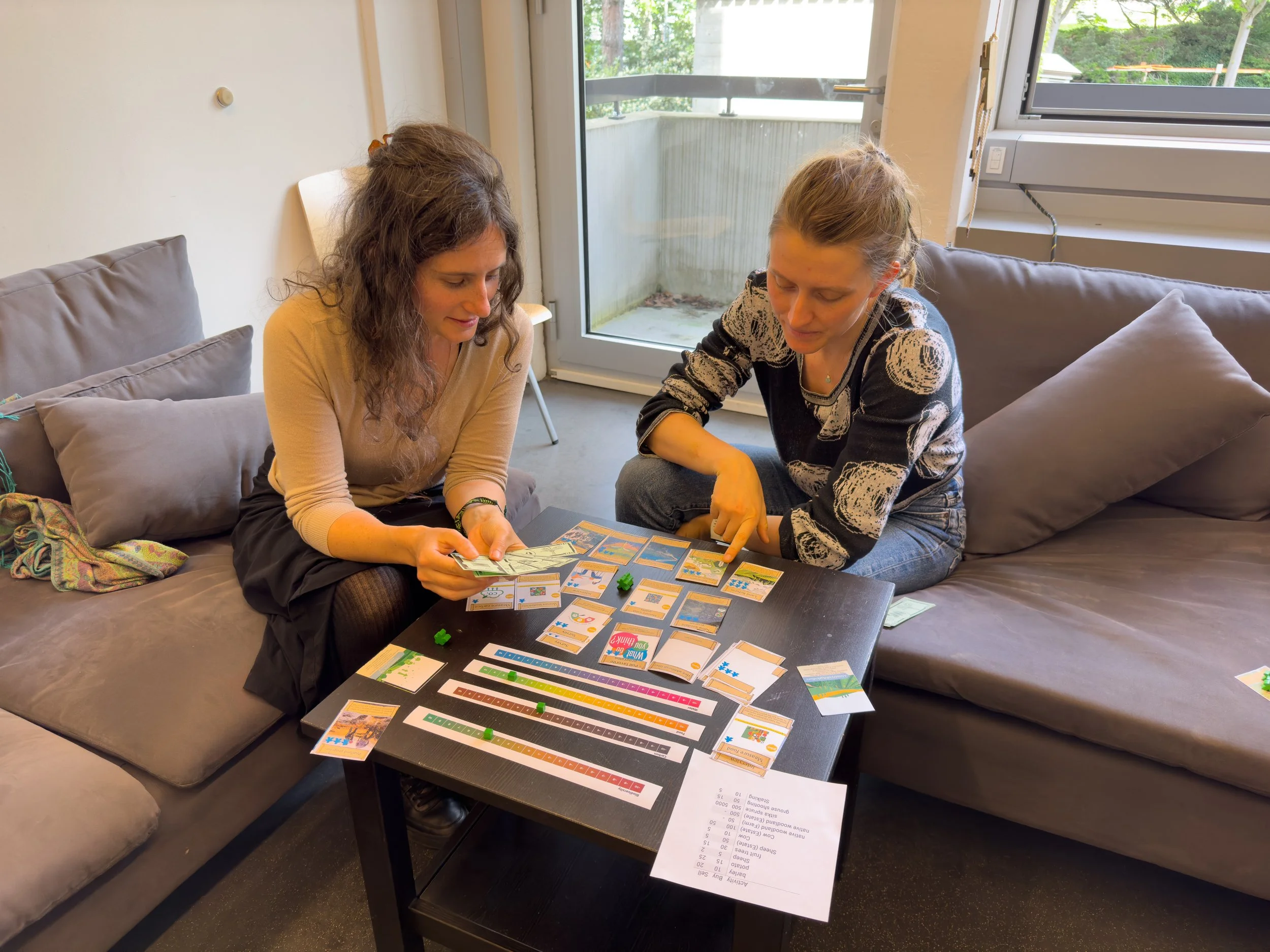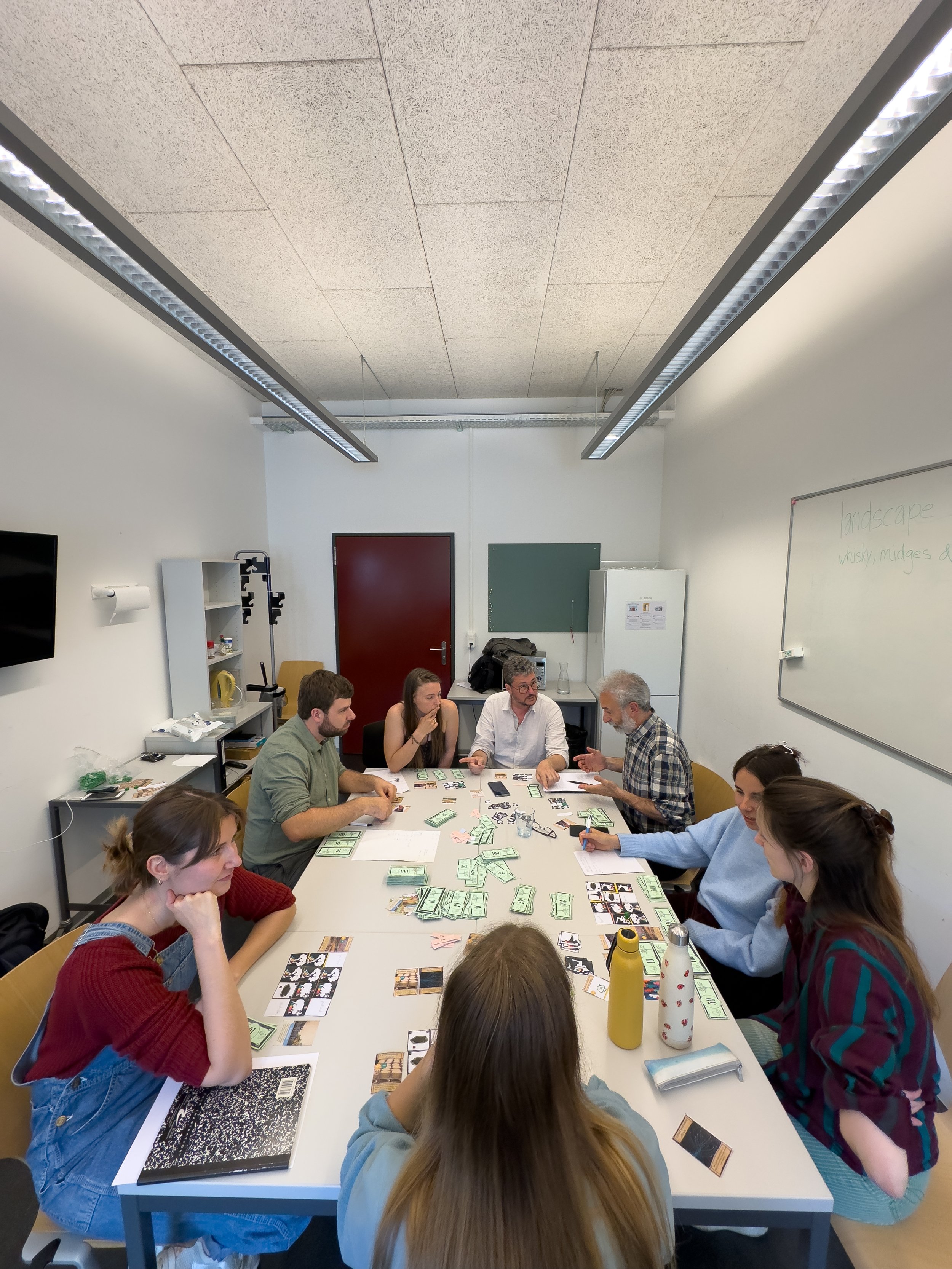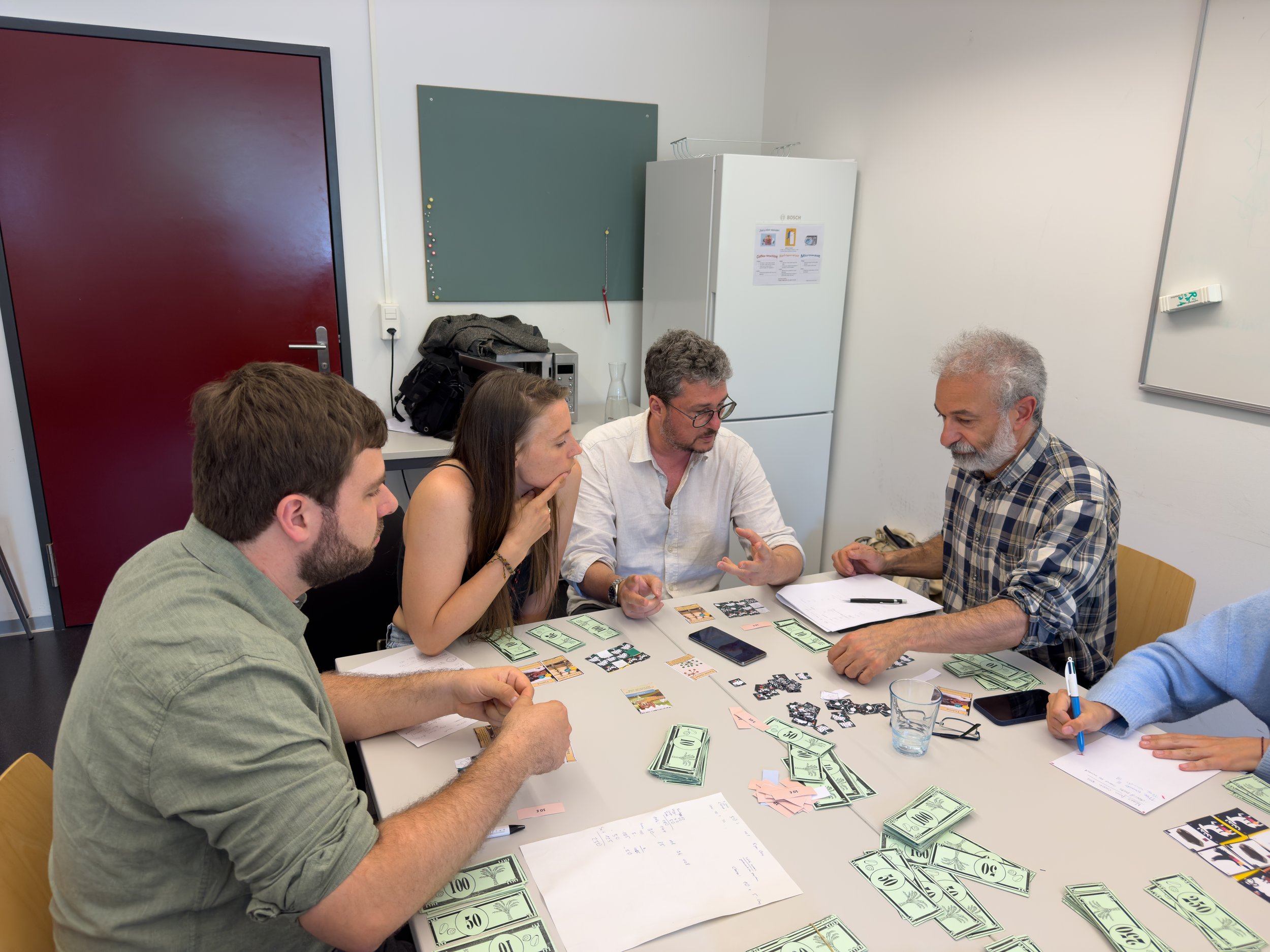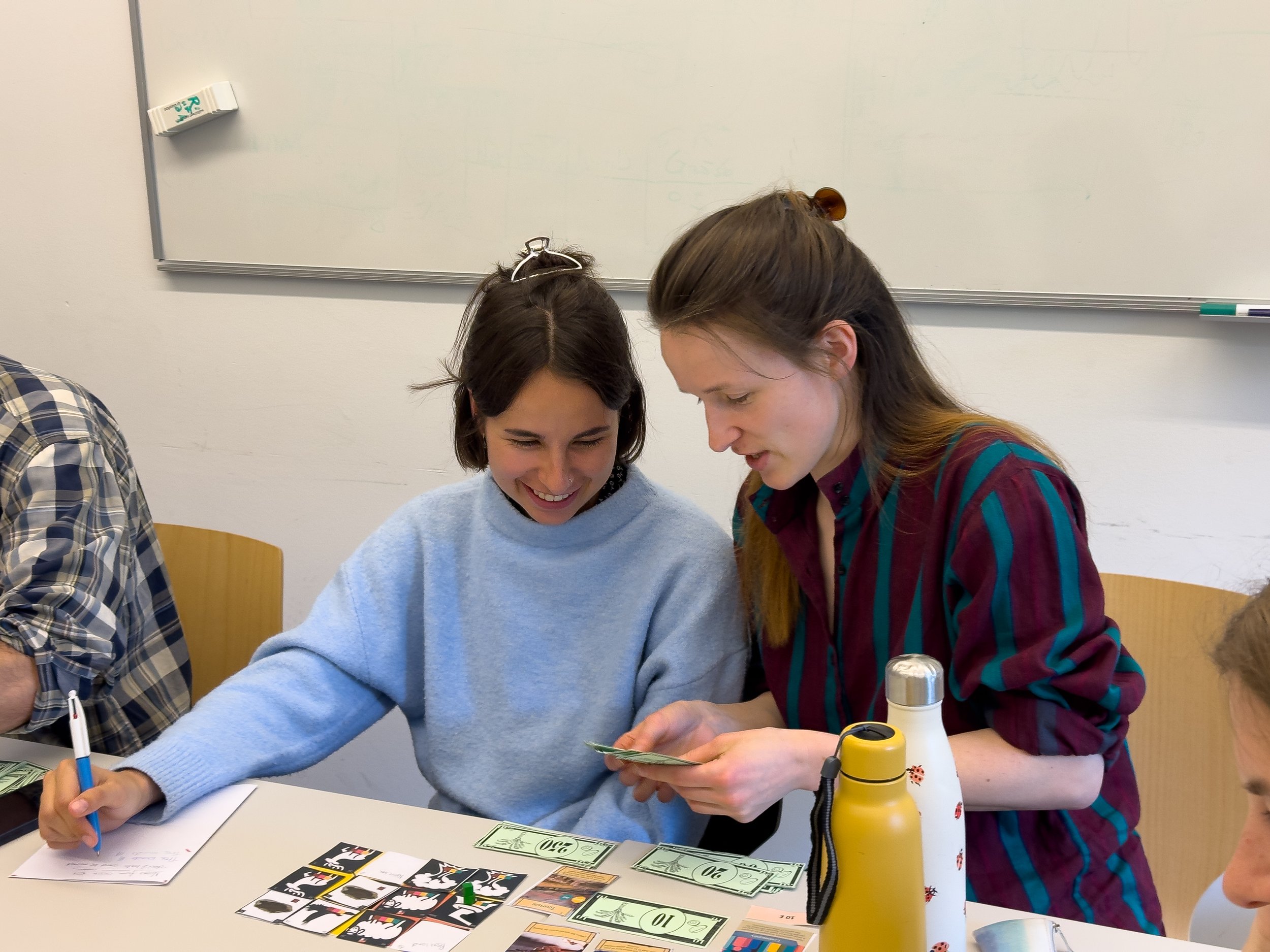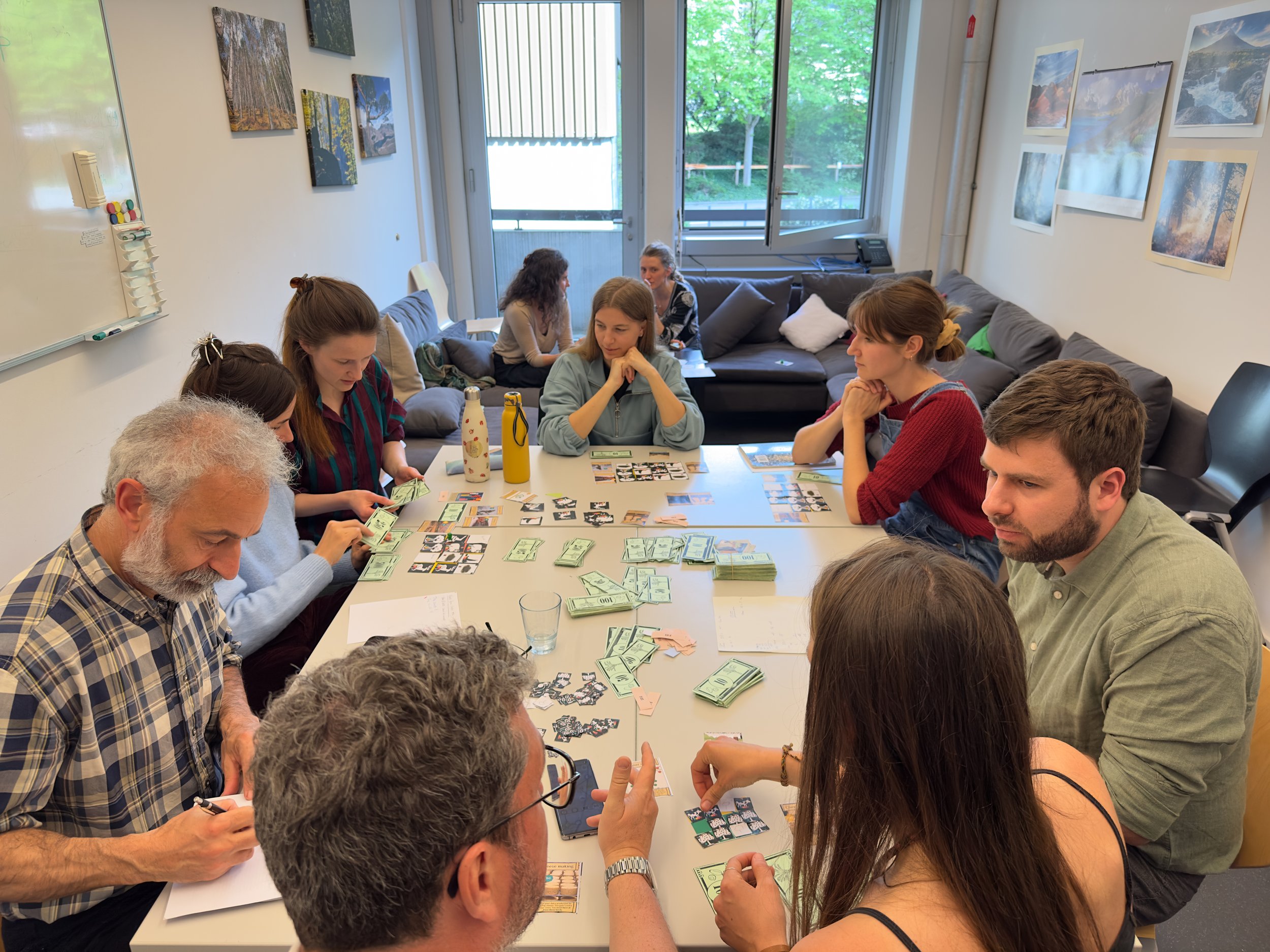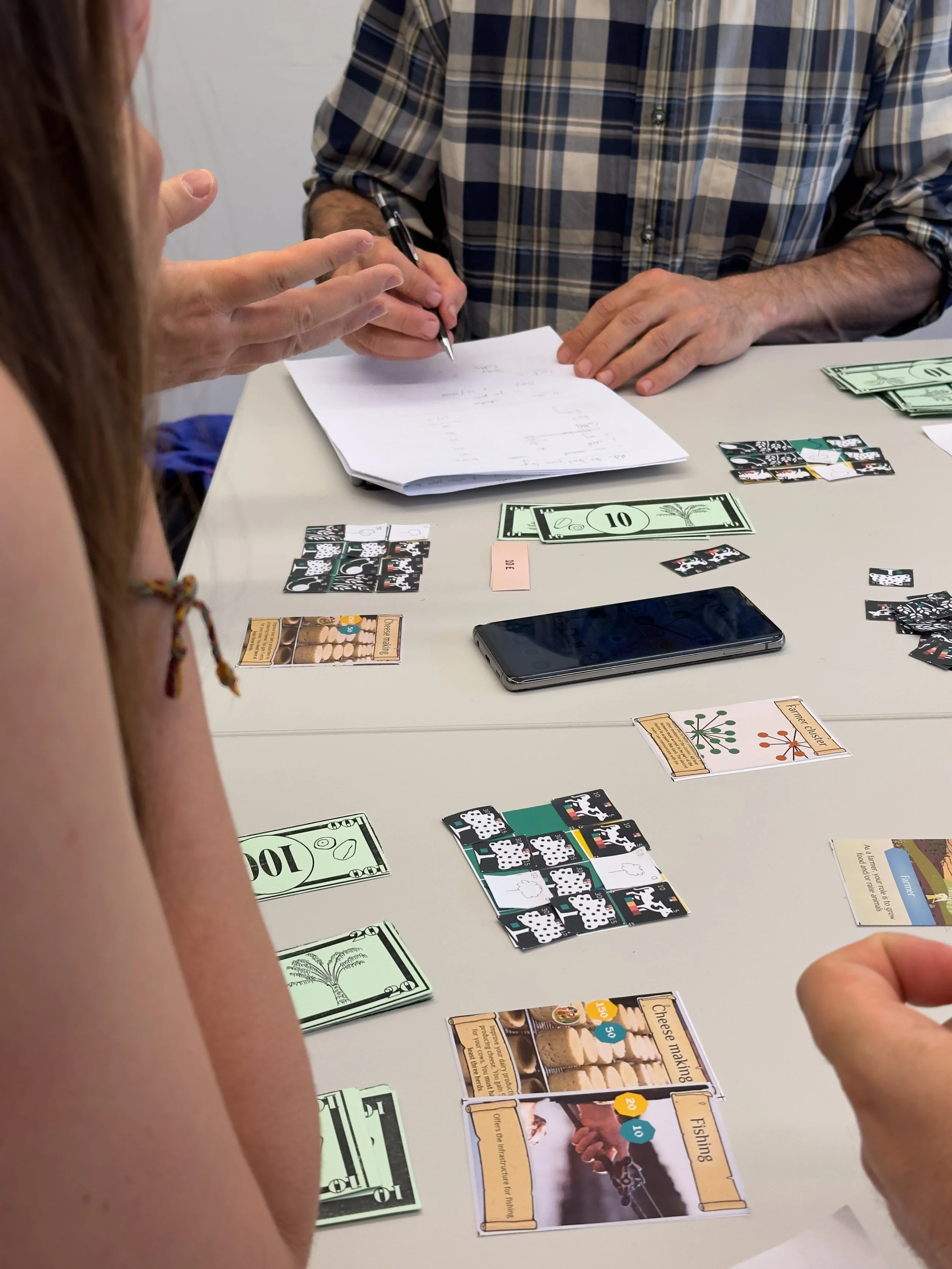Designing ScotScape
ScotScape is an innovative model that simplifies landscape management in Scotland, offering players an immersive experience where they can connect, discuss desired changes, and propose alternative landscape scenarios based on a shared vision. To achieve this, we integrate robust scientific data with the experiential knowledge of local and regional stakeholders, ensuring a diversity of perspectives. We engaged with farmers, estate owners, local authorities, community members, resource managers, and conservation agencies to create a representative depiction of Scotland's socio-ecological landscapes. The game is designed to be adaptable to various rural contexts across Scotland, from the Southern Uplands to the Northwest Highlands and Islands.
The first step in designing ScotScape was to understand the desires of local actors regarding landscape management. In Tayside, we engaged with the community, who emphasized the need for collaboration among individuals with different worldviews to address the climate and biodiversity crisis. With this need defined, we interacted with stakeholders across the landscape to gather multiple perspectives, which we compiled and summarized using the ARDI approach. This method explicitly describes the relevant actors, resources, dynamics, and interactions within the system.
After summarizing the data, we selected which actors would become playable characters in ScotScape and identified the resources to feature in the game. We then considered the choices each character would have, such as a farmer deciding what crops to plant and animals to raise. Next, we designed the underlying mechanics, including gameplay and rules, and translated these into game components like the board (landscape), meeples (laborers), tokens (representing different crops, animals, and trees), and money.
The ARDI approach shows the interactions between actors (green) and resources (yellow).
“Getting people with very different world views to come together to take action over the urgent need to resolve the climate and biodiversity crisis.”
At this stage, we developed a game prototype to test for balance, engagement, and the “fun element.” More importantly, we assessed whether the game met the goals of those involved in its design. Testing the prototype is an iterative process and a crucial step toward the final product. From February to June, we tested the game 14 times with various participants, including game design experts, students, and local actors. With the final version of the game, we plan to run multiple workshops across Scotland.
